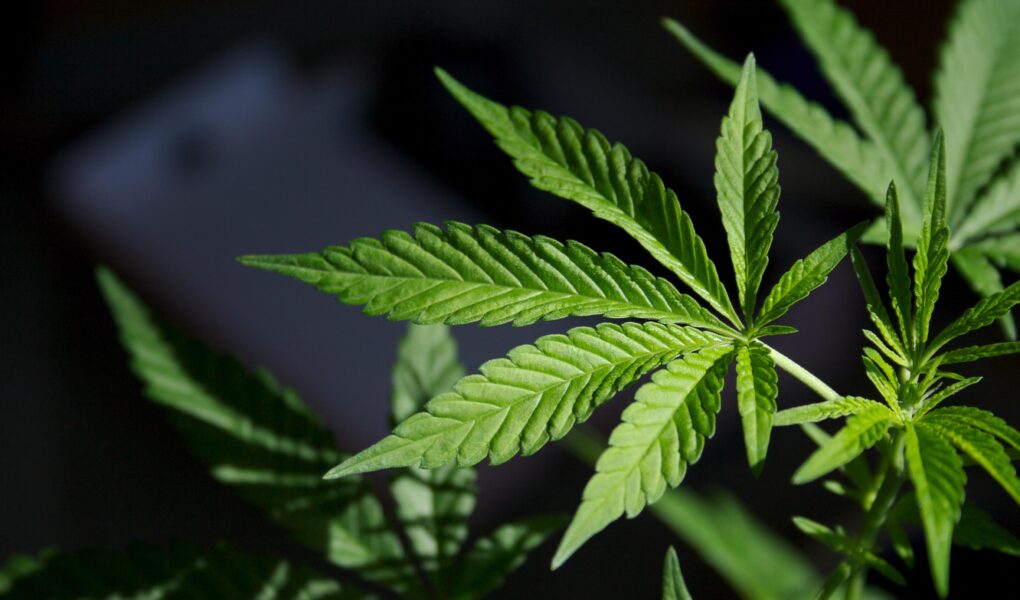In the ever-evolving landscape of cannabis, the conversation around marijuana contents has gained unprecedented prominence. As society’s perception of this once-stigmatized plant shifts, so too does our understanding of the myriad compounds it houses. From the well-known tetrahydrocannabinol (THC) and cannabidiol (CBD) to the lesser-known terpenes and flavonoids, the intricate interplay of these elements shapes not only the effects of marijuana but also its therapeutic potential. This article delves into the fascinating world of marijuana contents, exploring how the composition of this botanical wonder can influence everything from user experience to medical applications, illuminating the delicate balance between nature’s chemistry and human curiosity. Join us as we unpack the layers of this complex subject, providing clarity in an arena often shrouded in confusion and misrepresentation.
Table of Contents
- Exploring the Chemical Compounds in Marijuana
- Understanding THC and CBD Ratios for Optimal Benefits
- The Role of Terpenes in Marijuanas Flavor and Aroma
- Choosing the Right Strain for Your Desired Effects
- Q&A
- Key Takeaways
Exploring the Chemical Compounds in Marijuana
Delving into the intricate world of marijuana reveals a plethora of chemical compounds that contribute to its unique properties and effects. Among the most notable are cannabinoids, a group of biologically active compounds that interact with the endocannabinoid system in the body. The two most famous cannabinoids are:
- Tetrahydrocannabinol (THC): The primary psychoactive component responsible for the “high” feeling.
- cannabidiol (CBD): Known for its therapeutic effects without the intoxicating effects associated with THC.
In addition to cannabinoids, marijuana is rich in terpenes, which are aromatic compounds that contribute to the plant’s distinct scents and flavors, while also enhancing its therapeutic benefits. Some common terpenes found in marijuana include:
- Myrcene: Known for its earthy aroma and relaxing properties.
- Limonene: Characterized by a citrus scent and potential mood-enhancing effects.
- Pinene: With a fresh pine aroma, it is believed to improve focus and memory.
| Cannabinoid/Terpene | Effect |
|---|---|
| THC | Psychoactive, Euphoria |
| CBD | Anti-inflammatory, Anxiolytic |
| Myrcene | Relaxation, Sedation |
| Limonene | Elevates Mood, Reduces Stress |
Understanding THC and CBD Ratios for Optimal Benefits
In the world of cannabis, the balance between THC (tetrahydrocannabinol) and CBD (cannabidiol) is crucial for unlocking a range of therapeutic and recreational benefits. Understanding the significance of different ratios can help users tailor their experience to suit their needs. Low-THC, high-CBD strains are often favored by individuals seeking relief from anxiety or inflammation without the psychoactive effects associated with THC. Conversely, high-THC strains may be preferred for those looking to enjoy the euphoric sensations that cannabis can provide while also experiencing pain relief or stimulating appetite.
The following table outlines some common THC to CBD ratios and their potential effects:
| Ratio | Effects |
|---|---|
| 1:1 | Balanced effects; ideal for relaxation without sedation. |
| 2:1 | Mild psychoactive effects; good for pain relief and mood enhancement. |
| 5:1 | Predominantly therapeutic; minimal high, suitable for anxiety management. |
| 10:1 | High CBD, low THC; excellent for seizure disorders and chronic pain. |
By experimenting with various THC and CBD ratios, users can personalize their cannabis experience. Factors to consider when choosing a ratio include individual tolerance levels, desired effects, and specific health conditions. Always consult with a knowledgeable professional to find the right balance, ensuring a safe and beneficial exploration of cannabis’s potential.
The Role of Terpenes in Marijuanas Flavor and Aroma
Terpenes are organic compounds found in many plants, including marijuana, that contribute significantly to the experience of our favorite strains. These aromatic molecules not only enhance the flavor and aroma but also have the potential to influence the effects of cannabis through what is known as the “entourage effect.” Different terpenes play unique roles in shaping the sensory profile of marijuana, resulting in distinct alluring scents and flavors that can transport users to different environments. Some of the most prevalent terpenes include:
- Myrcene: Often associated with a musky, earthy aroma reminiscent of cloves and hops.
- Limonene: Known for its citrus scent, providing a zesty and uplifting experience.
- Pinene: Gives off a fresh pine smell, contributing to feelings of alertness and clarity.
- Lavender: Promotes calming effects with its floral fragrance.
The unique combination of these and other terpenes not only reflects the natural complexity of cannabis but also enhances the cultivation and consumption experience. By understanding terpenes, users can navigate various strains more effectively, targeting those that might suit their preferences and desired effects. Below is a simple comparison table showcasing some common terpenes and their associated flavors and benefits:
| Terpene | Flavor/Aroma | Potential Benefits |
|---|---|---|
| Myrcene | Earthy, musky | Relaxation, sedative effects |
| Limonene | Citrus, fruity | Elevating mood, anti-anxiety |
| Pinene | Pine, fresh | Alertness, memory retention |
| Beta-Caryophyllene | Spicy, peppery | Anti-inflammatory properties |
Choosing the Right Strain for Your Desired Effects
When selecting a cannabis strain, it’s crucial to consider your intended effects, as different strains can lead to vastly different experiences. A few distinct categories exist based on the predominant compounds within the plant. Sativa strains often provide an uplifting and energizing effect, perfect for social situations or creative endeavors. In contrast, Indica strains are typically associated with relaxation and relief from tension, making them ideal for unwinding after a long day. Meanwhile, Hybrid strains offer a unique blend of both types, catering to those seeking a balanced experience. Always keep in mind your specific goals, whether it’s increased focus, enhanced sociability, or deep relaxation.
The potency and flavor profiles of these strains can help guide your decision. Consider the following key factors in your selection process:
- THC Levels: Higher THC can produce more intense effects, while lower levels may offer a milder experience.
- Terpene Profiles: Terpenes not only influence the aroma and flavor but also play a role in how each strain affects your mood and body.
- Desired Duration: Some strains are tailor-made for short-term enjoyment, while others may provide lasting relief for chronic conditions.
Assessing these elements can significantly enhance your cannabis experience, ensuring you find the right strain that matches your needs.
Q&A
Q&A about Marijuana Contents: Understanding What’s Inside the Plant
Q1: What are the primary compounds found in marijuana?
A1: Marijuana is a complex plant that hosts over 400 chemical compounds, with the most notable being cannabinoids, terpenes, and flavonoids. The two most well-known cannabinoids are THC (tetrahydrocannabinol) and CBD (cannabidiol). THC is responsible for the psychoactive effects, while CBD is often sought for its therapeutic benefits without the high.
Q2: How do cannabinoids interact with the body?
A2: Cannabinoids interact with the body’s endocannabinoid system, a network that plays a crucial role in regulating various physiological processes, including mood, pain, appetite, and memory. When cannabinoids bind to receptors in this system, they can either enhance or inhibit certain functions, leading to the diverse effects users experience.
Q3: What are terpenes, and why are they important?
A3: Terpenes are aromatic compounds found in many plants, including marijuana, contributing to the distinct scents and flavors of different strains. Beyond their sensory characteristics, terpenes may also interact with cannabinoids to enhance or modify their effects, a phenomenon known as the “entourage effect.” Popular terpenes like myrcene, limonene, and pinene bring unique profiles that can influence users’ experiences.
Q4: Can the content of THC and CBD vary significantly between strains?
A4: Yes, the THC and CBD content can vary widely between different strains of marijuana. Some strains are bred to have high THC levels for those seeking psychoactive effects, while others are cultivated to have high CBD levels for potential medical benefits. Understanding the balance of these cannabinoids in a strain can help users select the right product for their needs.
Q5: How can consumers determine the potency and contents of marijuana products?
A5: Consumers can look for lab-tested products that display a certificate of analysis (COA). This document breaks down the concentrations of cannabinoids, terpenes, and sometimes contaminants like pesticides or heavy metals. Reputable dispensaries often provide this information, allowing users to make informed choices about what they’re consuming.
Q6: Are there specific marijuana contents associated with certain effects?
A6: Yes, different strains and their specific contents can lead to differing effects. For example, a strain high in THC and low in CBD may produce euphoric and intoxicating effects, while a strain high in CBD might promote relaxation and alleviate anxiety without feeling high. The interplay of cannabinoids and terpenes further tailors these experiences, making the world of marijuana remarkably diverse.
Q7: Can marijuana contents affect tolerance?
A7: Indeed, tolerance to marijuana effects can develop over time with regular use. As your body becomes accustomed to certain levels of cannabinoids, you may require higher doses to achieve the same effects. Switching strains or exploring varieties with different cannabinoid and terpene profiles can sometimes help mitigate tolerance.
Q8: What should users keep in mind about the safety and content of marijuana products?
A8: Users should always prioritize safety by choosing products from reputable sources that conduct thorough testing. Understanding individual tolerance levels and starting with lower doses can also enhance the experience while minimizing adverse effects. Moreover, knowledge of local regulations regarding marijuana use is crucial for staying compliant and safe.
This Q&A format provides a comprehensive overview while maintaining a neutral tone, ensuring clarity and accessibility for readers unfamiliar with marijuana content. If you’re looking for additional details or a different focus, feel free to let me know!
Key Takeaways
As we navigate through the intricate landscape of marijuana contents, it becomes clear that understanding this multifaceted plant goes beyond mere curiosity. With its diverse array of cannabinoids, terpenes, and flavonoids, each strain tells a unique story, crafted by nature’s hand and shaped by human cultivation. Whether you are a seasoned connoisseur or new to the world of cannabis, recognizing the significance of these compounds can enrich your experience and inform your choices.
Ultimately, the journey through marijuana’s contents is not just about seeking euphoria or relief; it’s about embracing a deeper connection to the plant, its origins, and its growing role in society. As research continues to unveil the mysteries held within, we stand on the brink of a new era—one that encourages us to explore responsibly and respect the complexities of this botanical wonder. So, as you venture forth, remember: every puff, every drop, and every edible holds the potential for discovery, making the world of marijuana as rich and varied as life itself.



